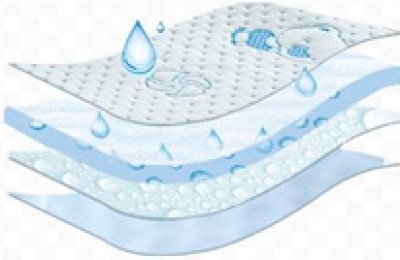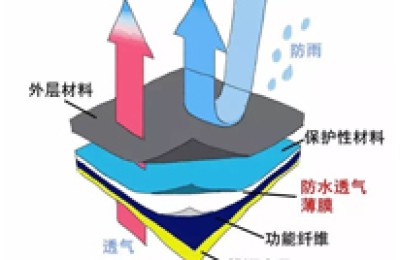The first of its kind in the country! Yantai police uncovered a case of false invoicing using an Internet sharing economy service platform! The amount involved is more than 1.3 billion yuan!
01. Alert the Ministry of Public Security! The first of its kind in the country! Using the Internet sharing economic service platform to issue false invoices
Recently, in accordance with the unified deployment of the Ministry of Public Security, the Yantai Municipal Public Security Bureau conducted a A case of falsely issuing special value-added tax invoices was closed nationwide. On the day of the operation, 10 provinces and 15 cities including Beijing, Tianjin, Hebei, and Shandong closed the Internet at the same time. The four levels of ministry, province, city, and county were coordinated. A total of more than 200 police officers were dispatched, and 46 people involved were summoned and controlled.
The scene was so shocking!
This case is the first case in the country of using an Internet sharing economic service platform to falsely issue invoices after the “business tax to value-added tax” tax reform, and is suspected of falsely issuing value-added tax The amount of special invoices is as high as 1.3 billion yuan.
Since the second half of this year, a number of corporate welfare platforms and financial and taxation service providers have been placed under investigation. The main cause of the incident was suspected money laundering and false invoice issuance, which implicated thousands of upstream and downstream companies in tax audits to pay taxes.
In addition, the State Administration of Taxation recently announced 6 typical cases of “three falsehoods”! More than 1,000 “fake enterprises” were seized, more than 100 suspects were arrested, and the amount involved was more than 30 billion yuan.
As the saying goes, it is easy to be a boss, but not easy to run a business. We must not take chances and break the law.
02. Let me teach you a few tricks. You will know if the invoice is falsely issued.
In many cases, the invoice is falsely issued. It is a genuine and fake business. In this case, the problem of false issuance cannot be found by checking the authenticity of the invoice through the website (because the invoice itself is genuine). However, according to the experience of tax personnel and limited face information, it is also possible to analyze and judge whether the invoice involves false issuance, and finally expose the fact that it is falsely issued.
1. Analysis of the distance between the place of sale and the place of purchase
When taxpayers purchase goods and services, from the perspective of cost savings and convenience in receiving services, they will Try to purchase as close as possible. For example, if a glass manufacturer consumes natural gas when producing glass, from a cost-saving perspective, the company will generally not go far away to purchase natural gas. If taxpayers purchase from other places when it is clear that they can purchase nearby, it may involve accepting false payment.
This is a construction company in Anhui Province. The company undertook a river embankment construction project in Anqing. During the inspection of this enterprise, a material invoice showed the following information:
Name of goods: stone, total price and tax of 99,800 yuan, tax rate 17% (case before tax reform), the purchaser is There is no problem with the unit being inspected. However, the seller’s column shows this information: The sales unit is a company in Zhenjiang, and the company’s registered place is an office room in an office building in a certain district of Zhenjiang City.
The sales place and the purchasing place are 1,500 kilometers apart. Such a long distance is extremely unreasonable for the sales and purchase of stones. Such low-value goods are also produced near Anqing. If you choose to purchase goods from afar, you can only point to this unit and accept the false purchase. Subsequent investigations confirmed the inspector’s judgment. The unit was characterized as tax evasion for accepting false claims. The input tax obtained was not deductible and the falsely increased costs were adjusted to increase taxable income. This behavior resulted in an underpayment of value-added tax. , the corporate income tax was recovered, and at the same time, a fine of twice the amount of the underpaid tax was imposed.
2. Analysis of the business scope and business capabilities of the other party
Any taxpayer will have its relatively stable business scope and business capabilities, such as an electrical appliance sales company The company generally does not provide housing agency services. For another example, an enterprise with a registered capital of 50,000 yuan and five employees is unlikely to undertake a project costing 100 million yuan and issue an invoice with a face value of 100 million yuan, which is inconsistent with its operating capabilities.
When the inspectors checked Company B’s “administrative expenses” account books and vouchers, they found a general value-added tax invoice. The invoicing unit was “Sheng* Electronics Business Department” and the name of the goods or taxable labor or services was The “consulting fee” is 29,999 yuan, and there is no relevant contract or agreement.
Ask the unit’s financial personnel, and the financial personnel’s answer is: management consulting fee. The inspectors inquired about the relevant registration information of “Sheng* Electronics Business Department” and found that the business department is a small-scale taxpayer and its business scope is the sales of electronic products. Obviously, it is impossible for such a unit to provide consulting services. The business recorded in the invoice does not exist and is a false invoice. In the end, the unit was punished for illegal invoices. At the same time, the underpaid corporate income tax due to false expenses was recovered and fined 0.5 times the underpaid tax.
3. The total amount of invoice price and tax is an integer
From a common sense, the amount of sales of goods or taxable labor and service price and tax is exactly an integer. The probability is extremely low.
In order to save trouble and facilitate the calculation of invoicing points, those who issue false invoices are relatively more willing to choose to issue invoices with integer amounts. Therefore, invoices with round amounts may often be falsely issued.
During the inspection of Dahua Company, the inspector found a lot of conference fees listed in the administrative expense account of the unit. He checked an accounting voucher with a larger amount, followed by an accounting voucher. A general value-added tax invoice titled conference fee, with a total price and tax of 200,000 yuan, is attached with meeting notice, meeting schedule, meeting invoice (verified to be authentic) and other supporting documents.
Although there was no problem with the form, the inspector still believed that the round amount was questionable. Through an extended investigation of the invoicing unit, it was confirmed that the business content of the invoice was not a conference fee, but a stored-value card for meals, and no expenditures were incurred on the stored-value card. In the end, the unit was charged with back taxes, fines, and late fees due to the inflated expenses and underpayment of corporate income tax.
The above-mentioned invoice inspection experience is also of great significance to taxpayers. In the daily process of obtaining invoices, if the invoice is verified to be true, financial personnel should also pay attention to analyzing the invoice information from the above three aspects to determine whether there are problems with the invoices obtained and avoid suffering economic losses and liability due to obtaining problematic invoices. Tax Risks.
03. In addition to the above three methods, textile enterprises can also identify false invoices in this way
1. First, start with the financial processing of enterprises that obtain VAT invoices. Look, they often have the following characteristics!
1) Virtual purchasing, signing fake contracts or no purchasing contracts at all;
2) No warehousing orders or fake warehousing orders, and no relevant shipping documents for receiving and sending goods;
3) The records of imports, sales and deposits are confusing and the corresponding relationships are unclear;
4) Accounts payable have been left unpaid for a long time, or the source of funds is unknown;
>
5) Judging from the bank statement, the phenomenon of idling funds is relatively obvious, and the payment is transferred back after being made;
6) The relationship with the customer is simple, except for “purchase” and “payment”. No other dealings;
7) The purchasing time with a certain customer is relatively fixed and concentrated, and funds flow in and out frequently;
8) The purchasing area is relatively concentrated.
2. Based on the above doubts, we can further trace its business dealings units. If the following situations exist, the signs will be more obvious:
1) Supplier Most of them are self-employed and have a short operating period. Among these enterprises, some have not conducted annual inspections as required, some have expired, and some have been revoked by the industrial and commercial department;
2) Operation Wide range and complete varieties, such as building materials, Wujijiaodian, chemical raw materials, textile plastics, auto parts, electronic products, photographic equipment, agricultural and sideline products, etc.;
3) The registered address is ambiguous It is unclear, pieced together here and there, and no real evidence is found;
4) Some companies do not exist at all, but use other people’s names to carry out illegal activities.
In view of the above situation, it should be reviewed from two aspects:
1) Whether the purchase and sale business truly exists;
2) To The local tax authorities verify their tax registration status and ask tax professionals to identify the authenticity of the VAT invoices. Once it is determined that the VAT invoice is falsely issued, the relevant responsible persons should be thoroughly investigated.
Please note! In order to prevent the occurrence of economic crimes, VAT invoices obtained from the following channels shall not be deducted when filing tax returns:
1) VAT invoices obtained without genuine purchase and sale business shall not be deducted;
2) If the payment has not been paid, or if it has been paid and then transferred back through other channels, no deduction shall be allowed;
3) There is a real procurement business, but the value-added tax invoice obtained If it is not issued by the seller, no deduction is allowed;
4) Value-added tax invoices issued under the name of others cannot be deducted;
5) Value-added tax invoices that are identified as fake by the tax authorities are not allowed to be deducted. Deduction.
In short, in purchasing and selling economic activities, the invoice, goods, and payment must be consistent. Otherwise, once the VAT invoice is deducted, whether it is a genuine invoice or a fake invoice, It is illegal and will be punished.
If the invoice obtained has the above doubts or problems, you should postpone the payment and declare the input tax deduction, and seek help from the tax authorities for verification in a timely manner. Especially for large purchases of goods, or if the long-term supplier changes the name of the invoicing party, bank account and account information, more emphasis should be placed on verification.
Invoice query methods:
1) Query invoices through the State Administration of Taxation website https://inv-veri.chinatax.gov/.
2) Check the invoice through the provincial tax bureau website.
3) Self-service invoice query through 12366 voice.
4) Go directly to the tax authorities for inquiries.
If the above methods cannot effectively determine the false invoice, you can go directly to the tax department in charge of the company with the original invoice for help to confirm the authenticity of the invoice. </p








